We break down the ten things you all need to know about whey protein before taking it. We try and break down the biggest questions people have around whey protein, what are the different types of whey protein and others.
We summarise the key points on whey protein below, click to expand on each question for more information.
- What is whey protein: Whey protein is a type of protein that is derived from milk and is considered a complete protein because it contains all nine essential amino acids.
- Benefits of whey protein: Whey protein is often used by athletes and bodybuilders for its muscle-building properties, but it may also help with weight loss, boosting the immune system, and reducing the risk of chronic diseases.
- Forms of whey protein: Whey protein is available in several forms, including whey protein concentrate, whey protein isolate, and whey protein hydrolysate.
- Absorption and digestion: Whey protein is rapidly absorbed and digested, making it an excellent source of protein for post-workout recovery.
- Dosage: The recommended daily dosage of whey protein varies based on factors such as age, gender, and physical activity level, but a typical serving size is about 20-30 grams.
- Allergies: Some people may be allergic to whey protein, so it’s important to pay attention to any adverse reactions and speak with a doctor if necessary.
- Fluctuating Price and Availability of Whey Protein: In recent years the price of whey has fluctuated widely due to availability meaning costs can rise and fall.
- Quality: The quality of whey protein can vary depending on the source, processing methods, and additional ingredients, so it’s important to choose a high-quality product.
- Side effects: In some cases, consuming high doses of whey protein may cause side effects such as bloating, gas, and digestive discomfort.
- Interactions with medication: Whey protein may interact with certain medications, including blood thinners, so it’s important to speak with a doctor before starting a whey protein supplement if you are on any medication.
What is whey protein?
Whey protein is a high-quality protein that is derived from milk. It is one of the two main proteins found in milk, the other being casein. Whey protein is considered a complete protein, which means that it contains all of the essential amino acids that the human body requires to build and maintain muscle tissue.
Whey protein is most commonly consumed in the form of a dietary supplement, particularly by athletes and bodybuilders. It is commonly used to support muscle growth and recovery after intense physical activity. This is because it is rapidly absorbed by the body and quickly delivers the essential amino acids that are needed to repair and build muscle tissue.
Whey protein can be found in several different forms, including whey protein concentrate, whey protein isolate, and whey protein hydrolysate. Each form of whey protein differs in its protein content, lactose content, and the level of processing it undergoes.
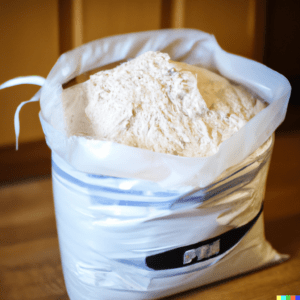
Whey protein concentrate is the least processed form of whey protein and typically contains around 70-80% protein. It also contains small amounts of lactose and other milk-based ingredients. Whey protein isolate is a more processed form of whey protein that has been filtered to remove more of the lactose and other milk-based ingredients. As a result, it typically contains around 90% or more protein.
Benefits of whey protein
Whey protein has been found to offer numerous benefits, both for people who are looking to build muscle and for those who are simply trying to maintain good health.
One of the primary benefits of whey protein is that it is quickly absorbed by the body, making it an ideal choice for post-workout recovery. After a workout, the body is in a state of muscle breakdown and repair, and the quick absorption of whey protein can help to support this process. This is because whey protein contains high levels of essential amino acids, including branched-chain amino acids, which play a crucial role in muscle synthesis and repair.
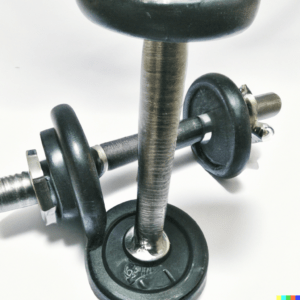
Another benefit of whey protein is that it can help to support weight management. Studies have found that consuming whey protein can lead to feelings of fullness and satiety, which can help to reduce overall calorie intake and support weight loss. Additionally, because whey protein is a high-quality protein, it can help to maintain muscle mass even during periods of caloric restriction.
Whey protein is also beneficial for overall health and wellness. It has been shown to have positive effects on the immune system, and some studies have found that it can help to lower cholesterol levels and improve cardiovascular health. Additionally, whey protein contains high levels of antioxidants, which can help to protect the body against oxidative stress and reduce the risk of chronic diseases.
Finally, whey protein is a convenient and versatile supplement that can be easily incorporated into a healthy diet. It can be added to smoothies, baked goods, and other foods, making it easy to consume even when you are on the go. Whether you are looking to build muscle, maintain good health, or simply want a convenient way to supplement your diet, whey protein is an excellent choice.

In conclusion, whey protein is a highly beneficial supplement that offers numerous health and fitness benefits. Whether you are an athlete looking to support your workout goals or simply looking to maintain good health, whey protein is an excellent choice. With its quick absorption, muscle-supporting amino acids, and health-promoting antioxidants.
There are several forms of whey protein that are available for consumption, each with its own set of benefits and drawbacks.
One of the most common forms of whey protein is whey protein concentrate (WPC). WPC typically contains 70-80% protein and is the least processed form of whey protein. This means that it still contains some of the milk sugars and fats, making it a more affordable option. However, it also means that it may contain lactose, which can cause digestive issues for people who are lactose intolerant.
Another form of whey protein is whey protein isolate (WPI). WPI is a more highly processed form of whey protein that has had most of the lactose and fats removed. This makes it a great option for people who are lactose intolerant or who are looking for a protein source that is lower in carbohydrates. However, WPI is typically more expensive than WPC.

A third form of whey protein is hydrolysed whey protein (HWP). HWP is a form of whey protein that has been broken down into smaller peptides, making it easier for the body to absorb and use. This makes HWP a great option for people who are looking for a fast-acting protein source, especially post-workout. However, HWP can be more expensive than other forms of whey protein, and it may also have a slightly bitter taste.
Finally, there is also whey protein blend (WPB), which is a combination of different forms of whey protein. WPB can offer the best of both worlds, providing a high-quality protein source that is easy to digest while still being affordable.
In conclusion, there are several forms of whey protein available, each with its own set of benefits and drawbacks. The form that is best for you will depend on your individual needs and preferences. Whether you are looking for a protein source that is affordable, easy to digest, or fast-acting, there is a form of whey protein that will meet your needs.

Forms of whey protein
There are several forms of whey protein that are available for consumption, each with its own set of benefits and drawbacks.
One of the most common forms of whey protein is whey protein concentrate (WPC). WPC typically contains 70-80% protein and is the least processed form of whey protein. This means that it still contains some of the milk sugars and fats, making it a more affordable option. However, it also means that it may contain lactose, which can cause digestive issues for people who are lactose intolerant.
Another form of whey protein is whey protein isolate (WPI). WPI is a more highly processed form of whey protein that has had most of the lactose and fats removed. This makes it a great option for people who are lactose intolerant or who are looking for a protein source that is lower in carbohydrates. However, WPI is typically more expensive than WPC.

A third form of whey protein is hydrolysed whey protein (HWP). HWP is a form of whey protein that has been broken down into smaller peptides, making it easier for the body to absorb and use. This makes HWP a great option for people who are looking for a fast-acting protein source, especially post-workout. However, HWP can be more expensive than other forms of whey protein, and it may also have a slightly bitter taste.
Finally, there is also whey protein blend (WPB), which is a combination of different forms of whey protein. WPB can offer the best of both worlds, providing a high-quality protein source that is easy to digest while still being affordable.

In conclusion, there are several forms of whey protein available, each with its own set of benefits and drawbacks. The form that is best for you will depend on your individual needs and preferences. Whether you are looking for a protein source that is affordable, easy to digest, or fast-acting, there is a form of whey protein that will meet your needs.
Absorption and digestion of Whey Protein
Whey protein is one of the most popular and widely used protein supplements in the world. It is a high-quality protein that is derived from the liquid that remains after the curd is removed from milk during cheese production. Due to its high nutritional value, whey protein has become a staple supplement for athletes, bodybuilders, and fitness enthusiasts who are looking to increase their protein intake. But how exactly does the body absorb and digest whey protein?

The absorption of whey protein begins in the stomach, where it is mixed with stomach acid and digestive enzymes. The acid and enzymes work together to break down the protein into smaller peptides, which are then absorbed into the bloodstream. Once in the bloodstream, the peptides are transported to the liver, where they are further broken down into individual amino acids. These amino acids can then be used by the body for a variety of purposes, including the building and repair of muscle tissue.
The digestion of whey protein is generally quick and efficient, with a majority of the protein being absorbed and utilized by the body within an hour of consumption. This is due to the fact that whey protein is a fast-digesting protein, meaning that it is quickly broken down into its component amino acids and absorbed into the bloodstream. In comparison, slower-digesting proteins, such as casein, take longer to digest and be absorbed by the body.
In addition to its quick digestion and efficient absorption, whey protein also has a high biological value, which refers to the amount of usable protein that is absorbed and utilized by the body. A protein’s biological value is an indicator of its quality, and whey protein has a biological value of 104, making it one of the highest quality proteins available.

In conclusion, whey protein is a high-quality protein that is quickly absorbed and efficiently digested by the body. Its fast digestion and high biological value make it an ideal protein supplement for individuals looking to increase their protein intake, particularly athletes and fitness enthusiasts. Whether consumed as a standalone supplement or as an ingredient in other products, whey protein is a convenient and effective way to support the body’s protein needs.
Dosage of Whey Protein
Dosage of whey protein is an important aspect to consider for those who are looking to add this supplement to their diet. Whey protein is a type of protein that is commonly used as a supplement by athletes, bodybuilders, and fitness enthusiasts to help build muscle, improve recovery, and increase strength. It is also commonly used by people who are looking to increase their overall protein intake. The recommended dosage of whey protein varies based on several factors, including an individual’s age, weight, and activity level.
For adults, the standard recommended dose of whey protein is 1 to 2 scoops (20-40 grams) per day, taken either in the morning, after a workout, or before bed. It is generally recommended to consume whey protein within 30 minutes of exercising to help support muscle recovery and growth.

However, if you are looking to build muscle mass or increase strength, you may need to consume more whey protein. In these cases, it is recommended to consume 2-3 scoops (40-60 grams) of whey protein per day, spaced out throughout the day.
It is important to keep in mind that consuming too much whey protein can lead to digestive problems and kidney damage. It is also important to note that not all individuals respond the same to whey protein supplementation, and the optimal dose may vary from person to person.
Additionally, it is always best to consult a healthcare professional before starting any new supplement regimen, especially if you have any pre-existing medical conditions or are taking any medications.
In conclusion, the recommended dosage of whey protein ranges from 1 to 2 scoops (20-40 grams) per day for general health, and 2-3 scoops (40-60 grams) per day for muscle building and increased strength. However, individual needs may vary, and it is always best to consult a healthcare professional for personalized advice.

Allergies Associated with taking Whey Protein
Whey protein is a widely used dietary supplement for athletes, bodybuilders, and individuals looking to increase their protein intake. However, some people may experience allergies or adverse reactions to whey protein, which can be concerning and potentially harmful.
One of the main allergens associated with whey protein is lactose. Lactose intolerance is a condition in which the body is unable to break down lactose, a sugar found in milk and dairy products. People with lactose intolerance who consume whey protein may experience symptoms such as bloating, gas, abdominal pain, and diarrhea.

Another allergen that may be present in whey protein is casein, a protein found in milk. Some people may be allergic to casein, which can cause symptoms such as itching, hives, nausea, and breathing difficulties. In severe cases, casein allergy can lead to anaphylaxis, a life-threatening reaction that requires immediate medical attention.
In addition to lactose and casein, some people may also be allergic to ingredients added to whey protein supplements, such as sweeteners, artificial flavours, and food colouring. These allergens can cause symptoms such as skin reactions, gastrointestinal discomfort, and headaches.
If you suspect that you may be allergic to whey protein, it is important to seek medical advice. Your doctor may recommend an elimination diet or skin prick test to determine the specific allergen causing your symptoms. Once the allergen is identified, you can avoid consuming it and choose alternative protein sources that do not trigger your allergies.
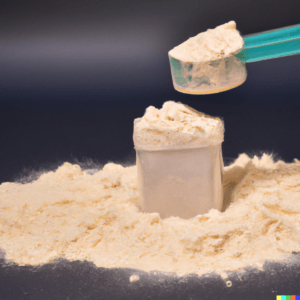
In conclusion, while whey protein is a popular and convenient way to increase protein intake, it can cause allergies or adverse reactions in some people. If you experience symptoms after consuming whey protein, it is important to seek medical advice and work with your doctor to determine the specific allergen and how to manage it. Alternative protein sources, such as soy protein, pea protein, or egg protein, may be suitable options for individuals with allergies to whey protein. However, it is important to discuss these options with your doctor or a registered dietitian to ensure that they meet your individual nutritional needs.
Fluctuating Price and Availability of Whey Protein
The price and availability of whey protein can be highly variable, which can impact its accessibility and affordability for many people.
One major factor that affects the price of whey protein is the cost of raw materials. Whey protein is a byproduct of cheese production, and the price of milk, which is the main ingredient used to make cheese, can fluctuate greatly depending on various factors such as weather conditions, disease outbreaks among cattle, and global demand. When the cost of milk rises, the price of whey protein is likely to increase as well. This means that people who rely on whey protein for their fitness regimen may have to pay more for it during periods of high milk prices.

Another factor that can impact the price and availability of whey protein is the demand for it. As more people become interested in fitness and healthy lifestyles, the demand for whey protein supplements has increased, which can lead to shortages and higher prices. This can be especially problematic for people who live in areas with limited access to supplement stores or for those who rely on online retailers, as shipping costs and wait times can be higher during periods of high demand.
The production and distribution of whey protein can also be impacted by global events such as natural disasters, pandemics, and trade disruptions, which can lead to supply chain issues and price fluctuations. For example, the COVID-19 pandemic caused widespread disruptions to global trade and transportation, which resulted in shortages of whey protein and other dietary supplements. This is why sometimes whey protein becomes very expensive and sometimes it seems there are lots of cheap whey protein deals on the market.
In conclusion, the price and availability of whey protein can be highly variable, and can be impacted by a variety of factors such as the cost of raw materials, demand, and global events. While these fluctuations can be frustrating for people who rely on whey protein for their fitness regimen, it’s important to keep in mind that these are factors beyond the control of manufacturers and retailers. If you are looking to purchase whey protein, it’s a good idea to monitor prices and stock levels, and to be prepared for possible changes in availability and price.
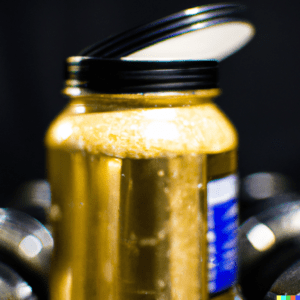
Quality of Whey Protein
Whey protein is a popular and highly sought-after source of protein in the fitness and health industry, and for good reason. It is considered one of the highest-quality forms of protein available and is known for its rapid absorption, amino acid profile, and wide range of health benefits.
One of the key factors that determine the quality of whey protein is the protein content. High-quality whey protein should have at least 70-80% protein content, with minimal amounts of fat and carbohydrates. Additionally, the source of the whey protein is also important, as grass-fed cows typically produce higher-quality whey protein than grain-fed cows.

Another factor that contributes to the quality of whey protein is the method of processing. Whey protein can be processed in several ways, including ion-exchange, microfiltration, and ultrafiltration. Of these methods, microfiltration and ultrafiltration are considered the most effective as they retain the highest levels of bioactive peptides, vitamins, and minerals.
The amino acid profile of whey protein is also critical to its quality. It should contain high levels of essential amino acids, such as leucine, isoleucine, and valine, which play a crucial role in muscle growth and repair. Additionally, the presence of branched-chain amino acids (BCAAs) in whey protein makes it an excellent option for those looking to build muscle and improve athletic performance.
Finally, the taste and mixability of the whey protein can also affect its quality. A high-quality whey protein should have a smooth texture and a pleasant taste, making it easy to drink and enjoyable to consume.

In conclusion, the quality of whey protein is a combination of several factors, including the protein content, source of the whey, processing method, amino acid profile, and taste and mixability. To ensure that you are getting a high-quality whey protein, it’s essential to look for products that meet these criteria. Additionally, it’s always a good idea to speak with a healthcare professional before starting a new supplement regimen.
Side Effects of Whey Protein
Whey protein is a popular supplement used by people of all ages, from athletes to bodybuilders, to those looking to build muscle, lose weight or improve their overall health. However, like all supplements, whey protein can also cause side effects. Some of the most common side effects of whey protein include digestive issues, allergies, and hormonal imbalances.
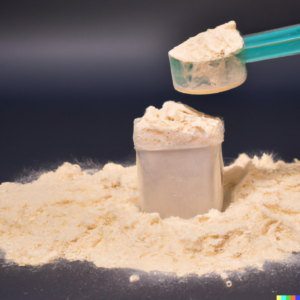
One of the most common side effects of whey protein is digestive issues. People who are lactose intolerant or have a sensitivity to dairy products may experience bloating, gas, diarrhea, and stomach cramps after consuming whey protein. This is because whey protein is a byproduct of milk and contains lactose, which can be difficult for some people to digest.
Another potential side effect of whey protein is allergies. People who are allergic to milk or have an intolerance to dairy products may experience symptoms such as itching, hives, and difficulty breathing after consuming whey protein. Additionally, some people may experience an allergic reaction to the artificial flavours, sweeteners, or other additives found in whey protein supplements.
In addition to digestive issues and allergies, whey protein can also cause hormonal imbalances. High levels of insulin-like growth factor 1 (IGF-1), a hormone produced by the liver in response to growth hormone stimulation, have been linked to an increased risk of certain cancers, including prostate cancer. Some studies have also shown that high levels of whey protein can increase the levels of estrogen and testosterone in the body, leading to hormonal imbalances and other health problems.
Finally, some people may experience headaches, fatigue, and other symptoms after consuming whey protein. These symptoms may be due to the presence of artificial additives, such as artificial sweeteners and flavourings, in some whey protein supplements.

In conclusion, while whey protein can be a valuable supplement for those looking to build muscle, lose weight or improve their overall health, it is important to be aware of the potential side effects. People who are lactose intolerant, have a dairy allergy, or have a sensitivity to artificial additives should be especially cautious when taking whey protein supplements. If you experience any of the side effects listed above, you should discontinue use and talk to your doctor to determine the best course of action.
Whey Protein Interactions with Medication
Whey protein is a popular dietary supplement that is commonly used by athletes and fitness enthusiasts to build muscle mass and improve exercise performance. It is derived from cow’s milk and is a rich source of essential amino acids, including branched-chain amino acids (BCAAs), which are crucial for muscle synthesis and recovery. However, it is important to understand the potential interactions of whey protein with medication, as some medications may affect its absorption or effectiveness.
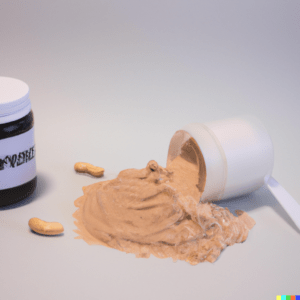
One common type of medication that may interact with whey protein is antacids. Antacids are used to neutralize stomach acid, but they can also interfere with the absorption of proteins, including whey protein. Antacids can reduce the rate at which whey protein is absorbed, leading to decreased protein synthesis and less effectiveness in building muscle mass. Therefore, it is recommended to take whey protein supplements at least one hour before or two hours after taking antacids.
Another type of medication that may interact with whey protein is antibiotics. Antibiotics can affect the gut microbiome, which is crucial for the absorption of proteins. Antibiotics can reduce the population of beneficial bacteria in the gut, leading to decreased absorption of whey protein. In addition, some antibiotics may bind to whey protein, preventing it from being absorbed. If you are taking antibiotics and also supplementing with whey protein, it is important to speak with your doctor to determine if there are any potential interactions.
Blood-thinning medications, such as warfarin, can also interact with whey protein. Warfarin works by reducing the ability of the blood to clot, which can reduce the risk of heart attacks and strokes. However, whey protein can also affect the coagulation of blood, potentially increasing the risk of bleeding. If you are taking warfarin or other blood-thinning medications, it is important to speak with your doctor before supplementing with whey protein.

In conclusion, whey protein is a safe and effective dietary supplement that can be used to build muscle mass and improve exercise performance. However, it is important to understand the potential interactions of whey protein with medication, as some medications can affect its absorption or effectiveness. If you are taking any medication, it is always recommended to speak with your doctor before starting any new supplement regimen.
Bonus Question:
Where does Whey Protein Come From?
Whey protein is a type of protein that is derived from milk. It is a by-product of the cheese-making process, which involves the separation of curds and whey. The curds are used to make cheese, while the whey is collected and processed further to extract the protein.
Whey protein is a complete protein, meaning it contains all of the essential amino acids that the human body needs but cannot produce on its own. It is also rich in branched-chain amino acids (BCAAs), which are important for muscle growth and repair. As a result, whey protein has become a popular supplement among athletes, bodybuilders, and fitness enthusiasts.
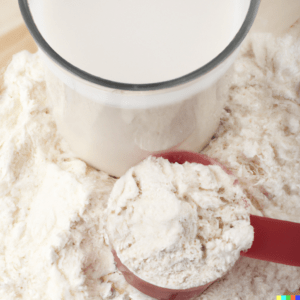
The production of whey protein starts with the collection of fresh milk, which is then subjected to pasteurization to kill any harmful bacteria. The pasteurized milk is then coagulated using rennet or an acidic substance, causing the separation of curds and whey. The curds are then collected, pressed, and aged to produce cheese. The remaining liquid, the whey, is processed to remove the lactose, fat, and other impurities, leaving behind a concentrated form of whey protein.
There are three main types of whey protein: concentrate, isolate, and hydrolysate. Whey protein concentrate (WPC) is the most commonly used form and contains anywhere from 30-90% protein, depending on the level of processing. Whey protein isolate (WPI) is a more highly processed form of whey protein, and it contains 90-95% protein, making it a purer form of whey protein. Whey protein hydrolysate (WPH) is a pre-digested form of whey protein, which means it has been broken down into smaller peptides for easier digestion and absorption.
In conclusion, whey protein is a high-quality protein source that is derived from milk during the cheese-making process. It is a complete protein, rich in essential amino acids, and is available in several forms, including concentrate, isolate, and hydrolysate. Whether you are an athlete, bodybuilder, or simply looking for a convenient source of protein, whey protein can help support your health and fitness goals.
This post contains affiliate links – We fund our hosting with these, thank you for your understanding
